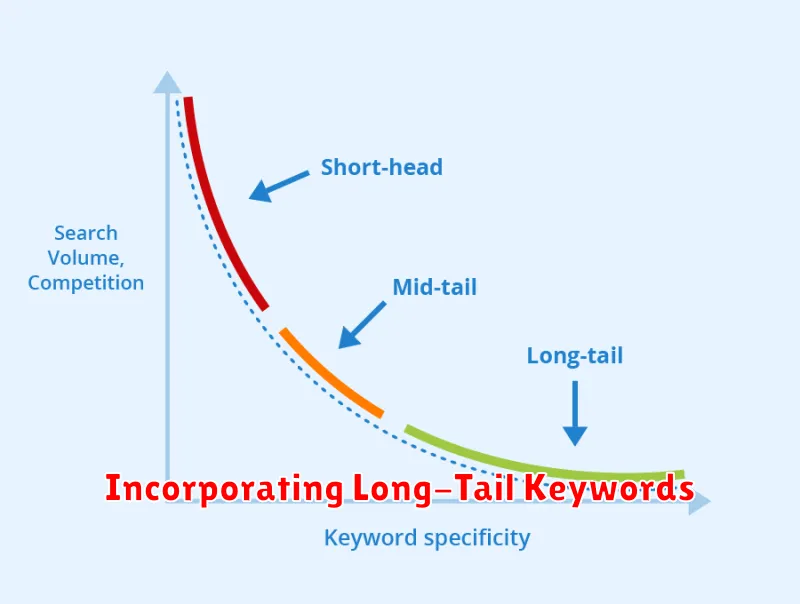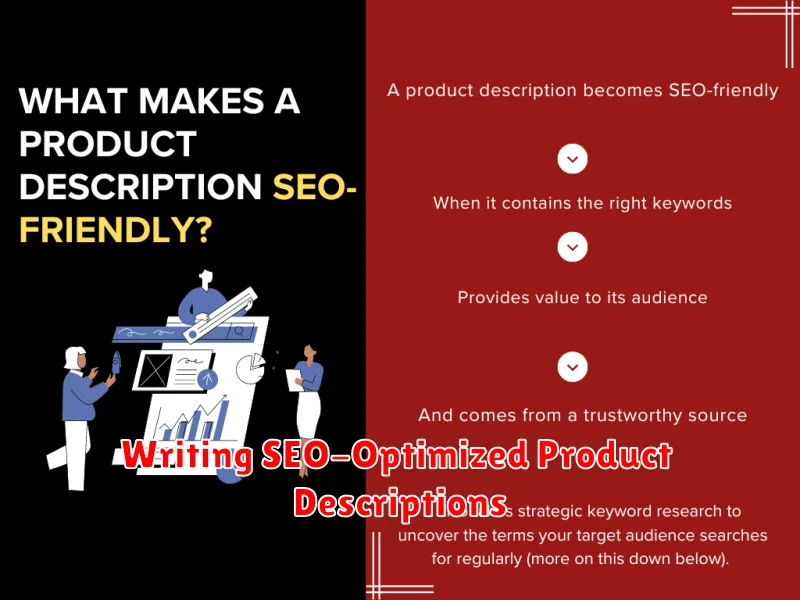Writing effective product descriptions is crucial for any e-commerce business. Product descriptions serve as the voice of your products, informing and persuading potential customers. However, simply describing your products isn’t enough. In today’s competitive online marketplace, SEO-optimized product descriptions are essential for driving organic traffic, increasing visibility, and ultimately, boosting sales. This means crafting compelling content that not only appeals to customers but also incorporates relevant keywords to rank higher in search engine results pages (SERPs). Learn how to write product descriptions that sell by mastering the art of SEO copywriting.
This article will provide a comprehensive guide to writing SEO-optimized product descriptions that convert browsers into buyers. We’ll explore the key elements of effective product description writing, including keyword research, persuasive language, and formatting best practices. By following these strategies, you can enhance your product pages, attract more qualified leads, and improve your overall SEO performance. Unlock the power of SEO-friendly product descriptions and transform your online store into a sales-generating powerhouse.
Why SEO Matters in E-Commerce
In the competitive landscape of online retail, Search Engine Optimization (SEO) plays a critical role in driving organic traffic and boosting sales. E-commerce SEO focuses on optimizing your online store and product listings to rank higher in search engine results pages (SERPs). This increased visibility directly translates to more potential customers discovering your products.
When customers search for products online, they typically use specific keywords related to their needs. Effective SEO ensures your product descriptions and website content align with these keywords, making it easier for search engines to understand what you offer and connect you with relevant searches. This targeted approach leads to higher quality traffic, as users are actively looking for products like yours.
Furthermore, strong SEO builds credibility and trust. Higher rankings often signal authority and relevance to consumers, influencing their purchasing decisions. By investing in SEO, you are not just increasing visibility, you are also building a stronger brand presence online.
Incorporating Long-Tail Keywords

Long-tail keywords are longer, more specific phrases that users type into search engines. They’re crucial for product descriptions because they reflect a higher purchase intent. Instead of targeting a broad term like “shoes,” consider using long-tail keywords such as “women’s red running shoes size 8” or “waterproof hiking boots for men with ankle support.”
Benefits of using long-tail keywords:
- Less Competition: Ranking for highly competitive keywords is difficult. Long-tail keywords face less competition.
- Higher Conversion Rates: Users searching with long-tail keywords are typically closer to making a purchase.
- Better Targeting: Attract the right audience by addressing their specific needs and preferences.
Research relevant long-tail keywords by analyzing customer search queries, using keyword research tools, and exploring competitor websites. Naturally incorporate these keywords into your product descriptions, ensuring they flow seamlessly within the text and enhance readability.
Balancing Clarity and Persuasion
Product descriptions must effectively communicate both what a product is and why a customer should buy it. This requires a delicate balance between clarity and persuasion.
Clarity ensures the customer understands the product’s features, functionality, and benefits. This involves using precise language, avoiding jargon, and focusing on essential details. A clear description answers key customer questions, reducing potential confusion and increasing purchase confidence.
Persuasion, on the other hand, motivates the customer to make a purchase. This involves highlighting the product’s value proposition, appealing to the customer’s needs and desires, and creating a sense of urgency or exclusivity. Persuasive language, while important, should never compromise clarity.
Finding the right balance involves presenting factual information in a compelling way. Focus on highlighting the benefits derived from the product’s features, rather than simply listing specifications. For example, instead of stating “500GB hard drive,” explain the benefit, such as “ample storage for thousands of photos and videos.”
Avoiding Duplicate Content
Duplicate content poses a significant challenge for SEO. Search engines struggle to determine which version of the content is the original and most relevant, potentially harming your product page’s ranking. It’s crucial to ensure your product descriptions are unique.
Common sources of duplicate content include manufacturer descriptions and using the same descriptions across multiple product variations. While using manufacturer-provided text as a base can be tempting, rewriting it is essential. Focus on highlighting unique selling points and benefits relevant to your target audience.
For products with slight variations (like color or size), create a unique description for each, highlighting the specific attribute. Consider using a template to ensure consistency while tailoring key details.
Using Structured Data for Products
Structured data provides search engines with a clear understanding of your product information. This allows search engines to better display your products in rich results, improving visibility and click-through rates. By implementing structured data, you empower search engines to showcase key product details directly in search results.
Commonly used structured data properties for products include:
- name: The name of the product.
- description: A concise and informative description.
- image: A URL to the product image.
- offers: Details about pricing and availability.
- sku: The product’s Stock Keeping Unit.
- brand: The brand of the product.
Using schema.org vocabulary, specifically Product, is the recommended approach for implementing product structured data. This standardized vocabulary ensures consistency and compatibility with various search engines.
Improving Mobile Readability
Mobile optimization is crucial for product descriptions. Most online shoppers browse and purchase using their smartphones. Therefore, ensuring descriptions are easily readable on smaller screens is essential for conversions.
Short Paragraphs: Break up long blocks of text into concise, digestible paragraphs. This enhances readability and prevents users from feeling overwhelmed.
Bullet Points: Utilize bullet points to highlight key features and benefits. This allows for quick scanning and comprehension of essential information.
Clear Font: Choose a legible font and an appropriate font size. Small or stylized fonts can be difficult to read on mobile devices.
White Space: Incorporate sufficient white space around text and images (if applicable in the larger article). This prevents the page from looking cluttered and improves visual appeal.

